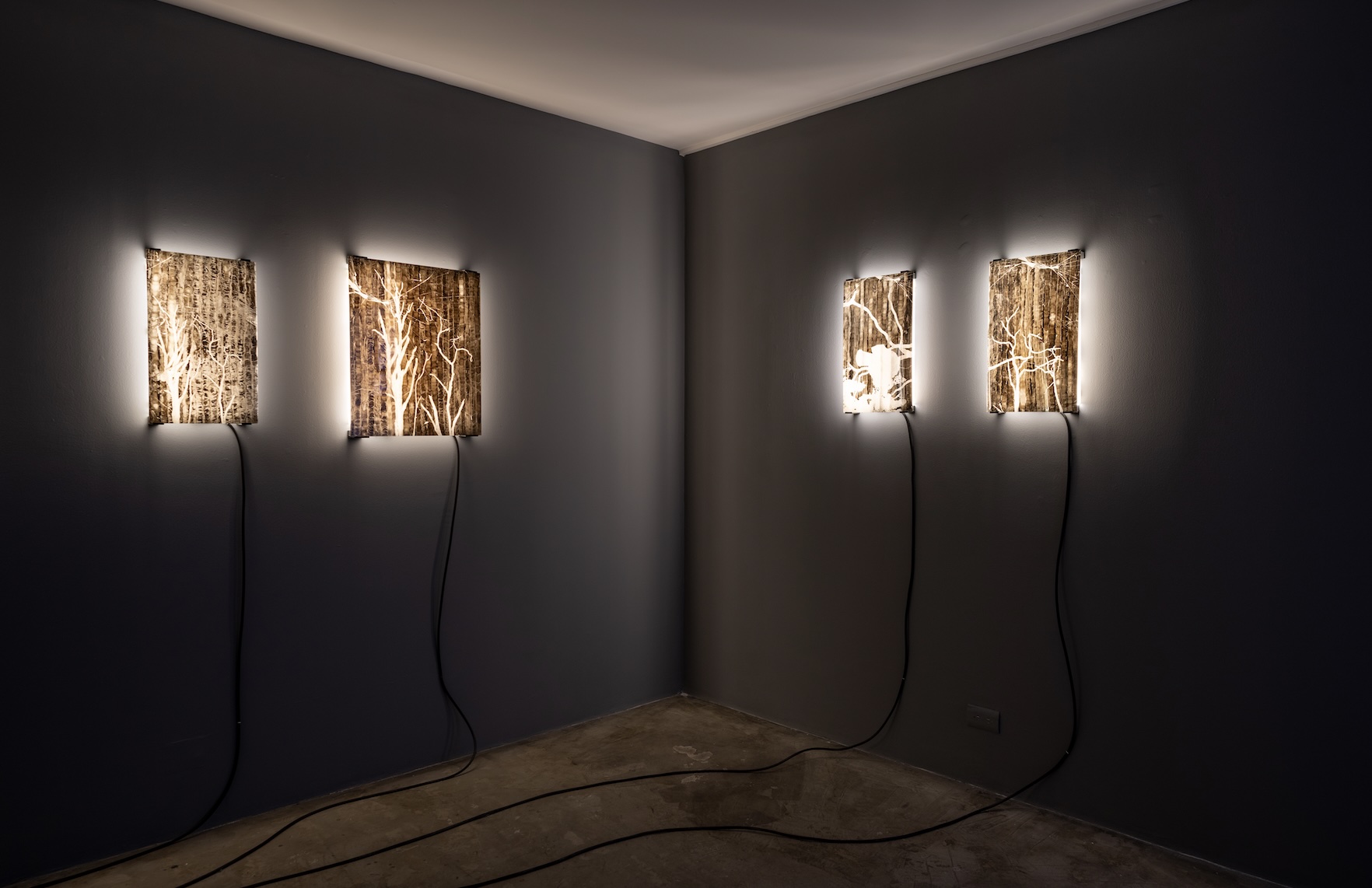
Daniel Monroy Cuevas
fotofobia
Guided tour
-> May 17
Lateral
Lateral invites you to a guided tour of fotofobia in the company of the artist, Daniel Monroy Cuevas, and the curator, Fabiola Iza.
Lateral invites to a guided tour of photophobia in the company of the artist, Daniel Monroy Cuevas, and the curator, Fabiola Iza.Over the last decade, Daniel Monroy Cuevas' work has investigated the relationship between fire and the creation of images. The artist's interest focuses mainly on cinema, reflecting on the very act of filmmaking as well as on the forms of production and consumption associated with it. These inquiries have led him to construct fictions and speculative scenarios that have materialized, among other outlets, through a drawing technique that uses smut, a by-product of combustion, as an instrument of artistic production.
Consisting of two new series, Fotofobia is a visual narrative that takes as its starting point the apocryphal notes and reflections of an uncertain narrator -a voice that could even be that of the camera itself- located in a forest ravaged by flames: a desolate space whose temporality and coordinates are so ambiguous that it could well be a limbo. The works displayed have been created through the contact of smoke with different surfaces -impressions of the tangible remains of light- and are inspired by forest fires as an engine of regeneration, that which marks the rhythm of natural cycles, as opposed to the devastating effect of human activities.
By observing and vaguely replicating the abstract textures and the fractured and sinuous lines of this naturally eroded territory that emerge as adaptive responses to fire on the part of different plant species, the exhibition shows how the scorching violence of these conflagrations allows for the resurgence of life. Intrigued by the ecology of fire, which is the relationship between this natural element and ecosystems, Fotofobiaaborda visually and metaphorically depicts the rupture that marks the irruption of fire in a specific environment, creating a parallelism with the cinematographic cut.
Among his many writings, Russian filmmaker Sergei Eisenstein stated that such a transition sets in motion a violent confrontation between images but, since it allows for an organic growth in the development of a montage and its continuous transformation, it also resembles the division of a cell. Thus, the exhibition emphasizes a correspondence between the two events: the regenerative capacity of fire and the dynamic relationship established by the cinematic cut between images, whose meanings are as diverse as the directions in which the flames burn in a fire.
–Fabiola Iza